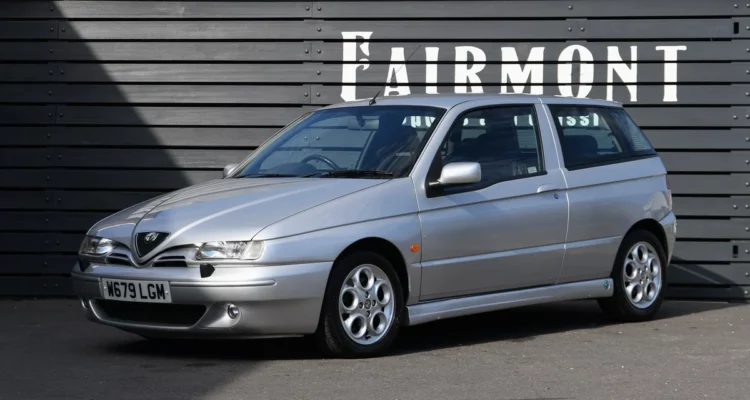The Citroën 2CV – Car & Classic Heroes
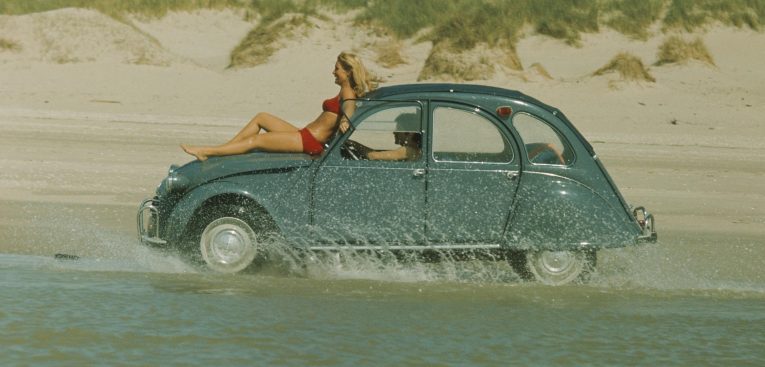
There are few cars that transcend the automotive world with such conviction. The Citroën 2CV, however, is one of them. Ask someone who knows nothing of cars to identify a 2CV and they will do without hesitation. It’s a car that has permeated the public consciousness over its long lifetime. We all know what a 2CV is. It’s that quirky, funny, cute, little French car. It’s a silly little thing, but in the most adorable way. Like a puppy or a toddler. You smile when you see one. Few cars can claim such widespread admiration.
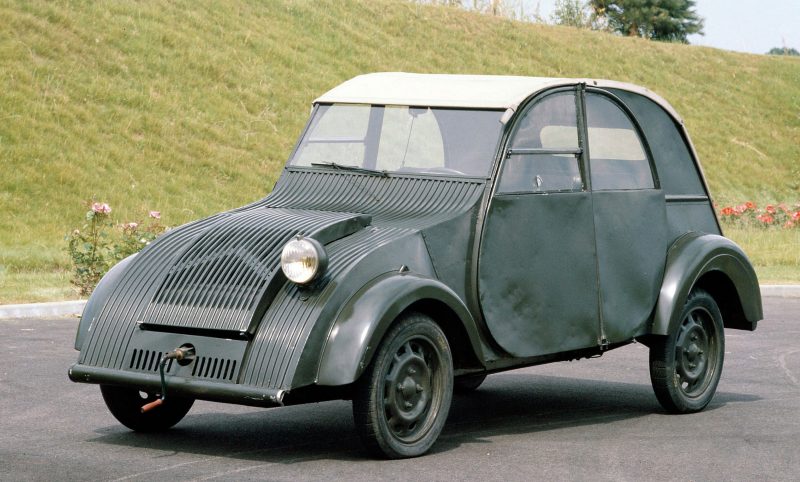
The 2CV we know and love is the car that arrived in the late 1940s, and that would go on, largely unchanged, until 1990. However, the story of the 2CV’s inception is one fraught with disaster, danger and war. It’s a story propped up by disaster and outside intervention, and it’s also a story that started with a wildly different car to the one we all know today. It also involves a rather well known tyre manufacturer.
In 1934, Citroën was in considerable trouble, to the point where it had declared bankruptcy. The company had been incredibly productive; it had built military vehicles throughout the First World War, it had produced cars in huge numbers and it also brought the innovative, stylish and frankly brilliant Traction Avant to market. However, it was the Traction Avant that was the company’s undoing. The development, the production costs, the tear-down and rebuild of the factory and the marketing costs meant the francs were going out of the door far faster than they were going in.
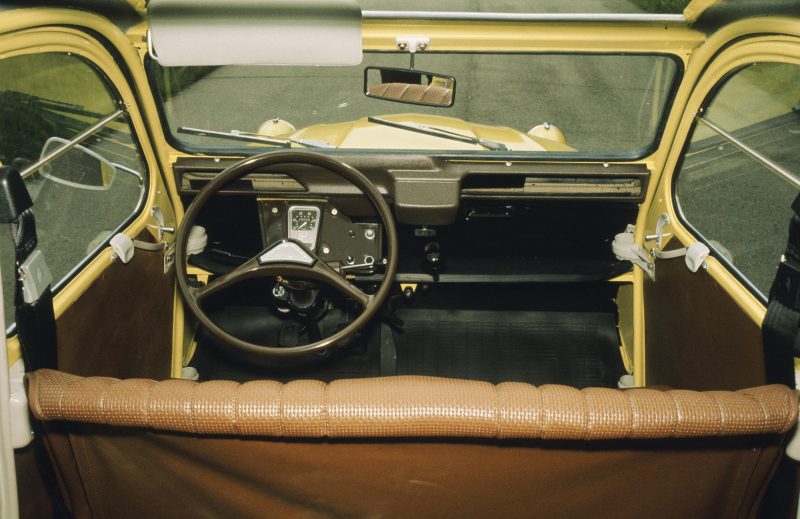
But what’s all this got to do with a small, strange car? Well, Michelin (Citroën’s largest creditor) took over and saved Citroën. The first thing it did when in power was conduct a survey, and that survey revealed there was a huge demand for something small, something frugal and something agricultural. The rural population was still reliant on horsepower in the most literal sense – internal combustion was too expensive. It simply hadn’t permeated that world. Michelin decided to change that.
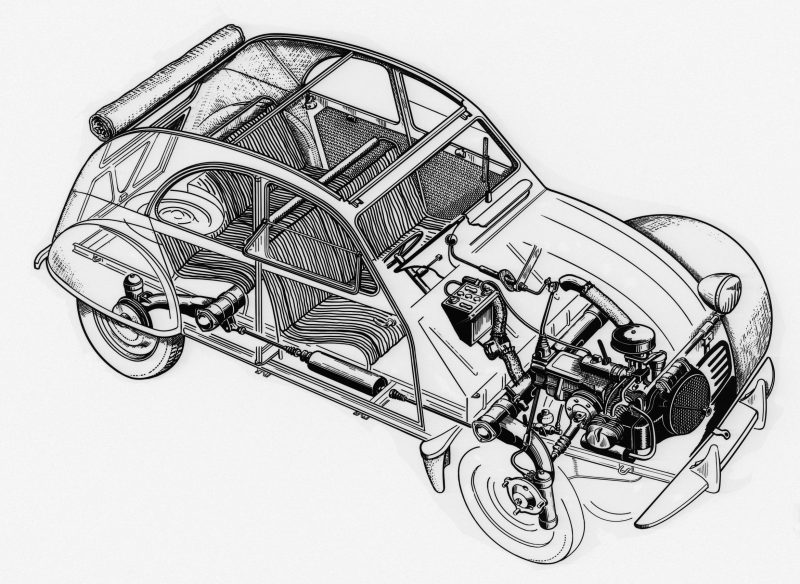
The results of the survey gave Citroën engineers some goals. This new vehicle had to be small, but also able to carry four people. It had to be light, but it had to be able to carry 50kg of goods, and it had to be able to do so over rough terrain. It also had to be frugal, with a goal of 95mpg imposed. Yes. Ninety five. And yes, the old story about eggs is true. This new car had to be able to carry a punnet of eggs over a ploughed field without any becoming scrambled.
The project was underway as of 1936, and was headed up by Citroën’s chief of engineering and design, Pierre-Jules Boulanger. Though at this stage, the name 2CV wasn’t in play. Instead, the project was known as the TPV, or Toute Petite Voiture, which is ‘Very Small Car’ in English. The French there, being quite delightfully literal.
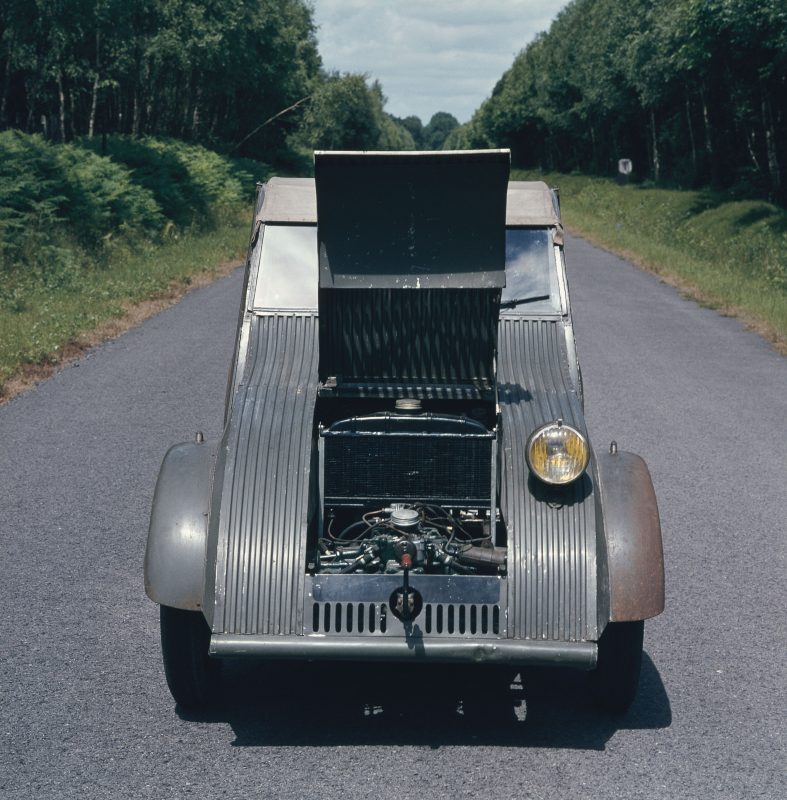
Early TPV models were odd contraptions. Barely a chassis with a bit of a roof, some seats and one headlight (as per French laws of the time). Of course, this was deemed a bit rudimentary, even for this vehicle’s brief. As such, more and more prototypes were built under André Lefèbvre’s direction – some 47 prototypes in fact. A team was set up to lighten the parts used, test drivers were regularly tasked with putting the TPV’s suspension through its paces and more engineering work was carried out on the then water-cooled two-cylinder engine. And by 1939, Citroën had something it was happy with.
250 TPV models were built. They were crude machines, even by the standard of the day. The body was made from lightweight yet strong corrugated aluminium. The seats weren’t seats, they were hammocks suspended inside the car (no, really), the paint was a simple grey and the interior was baron of any sort of creature comfort. But it didn’t matter. The car, thanks to its aluminium and magnesium construction, its small engine and its incredibly clever and compliant suspension (designed by Alphonse Forceau, the system used front leading arms and rear trailing arms, connected to eight torsion bars), the car met the design brief. Promotional material was printed and Citroën made preparations to launch the car at the 1939 Paris Motor Show. But the show would never come.
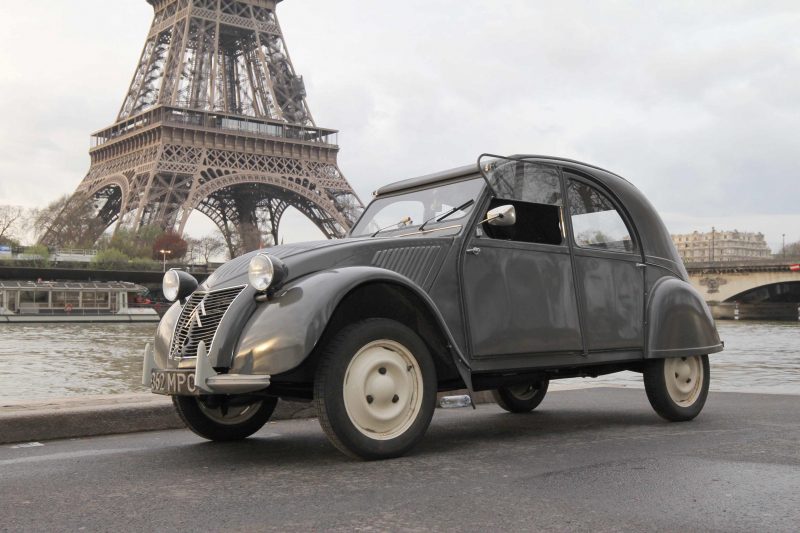
The onset of World War Two put paid to Citroën’s plans. But the war didn’t just delay the project, it also saw it go into hiding. Citroën, unwilling to cooperate or aid the Nazi regime in any way, opted to hide the TPV project. The cars were, for the best part, destroyed. Though some were buried in undisclosed locations, while one was converted to a pick up truck. Only two were thought to have survived. However, and as testament to the determination of Citroën to hide them, three were found in 1994. Where? Under bales of hay in the loft of a French barn!
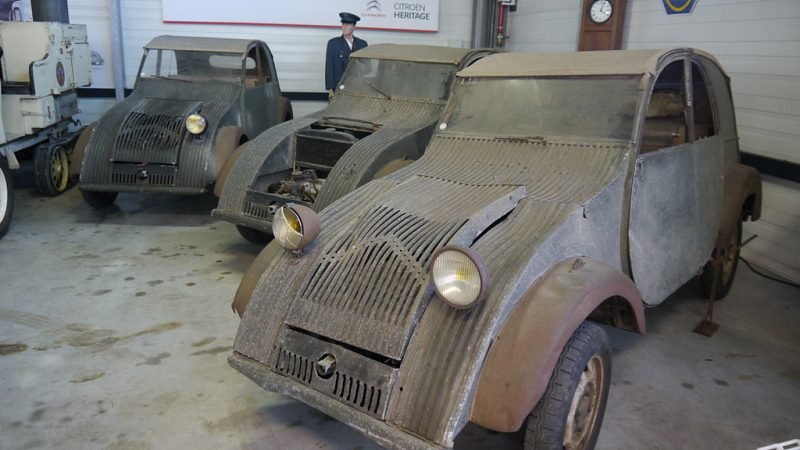
The three early TPV models after being found in a barn in 1994
After the war, the production and manufacturing landscape was very different to how it was prior. The materials used in the development of the TPV were all of a sudden very costly. Citroën had to go back to the drawing board. The demand for such a car was still present, more so than previously. As such, Citroën reworked the design, this time using steel panels. Also, the seats were changed for tubular steel items (that could be removed), the engine was changed to a two-cylinder air-cooled unit (still 375cc) and a four-speed transmission was designed and fitted – revolutionary for the time, with only the Fiat Topolino offering similar in this class. The body was re-styled by Flaminio Bertoni, with the resultant car looking more similar to what we know today as the 2CV.
The story didn’t end there though. Citroën was faced with another huge hurdle in the form of the French Socialist Government and its ‘Plan Pons’ which restricted the construction of small cars (though upper-level luxury cars like the Traction Avant were allowed, weirdly). The restriction was in place to ration the use of materials in post-war France as it tried to rebuild. Thankfully for Citroën, the restriction was lifted in 1949 and the 2CV as it was now known was put into production.
The little 2CV (or deux chevaux, meaning ‘two steam horses’) was an instant hit. It may have only packed 9hp, but it was spacious, it was incredibly rugged, it was reliable, it was frugal and it could indeed transport eggs and people without any breakages to either.
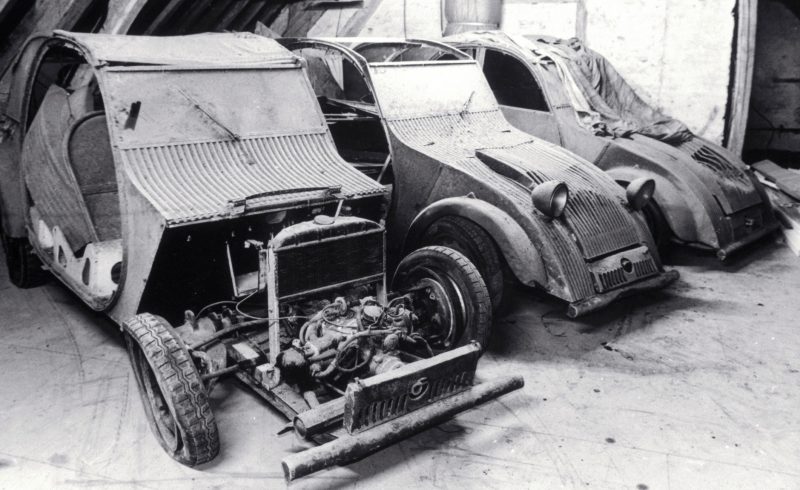
The three early TPV models after being found in a barn in 1994
The 2CV was built in France until 1988, and then for a further two years in Portugal. Its clever chassis, engine and suspension would go on to underpin a van version, a pick up, the Mehari, the Dayne and the Ami. Over the years, the 2CV did of course become more modern, but only in the most basic sense. The engine grew from 375cc to 425cc, then to 435cc and finally, a whopping 602cc. All remained true to their roots though, being air-cooled two-cylinder units. There were additions like better electrics, different interior and paint options, improvements to brakes and so on. But nothing major. Throughout its whole life, the 2CV remained largely faithful to the original car of 1948.
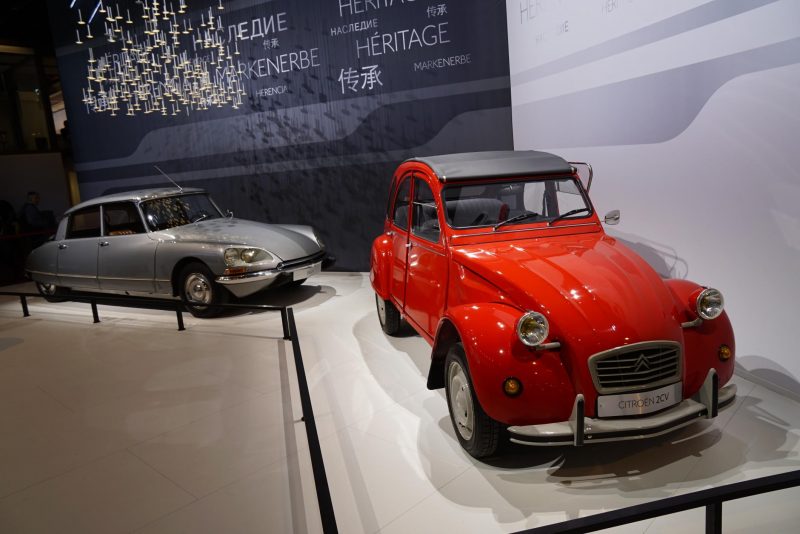
The Citroën 2CV is a fascinating car. It’s also a car that very nearly never happened. It literally survived World War Two by hiding. The machining and press tools were liberated from the Germans by the French Resistance (they re-labelled the train cars containing the tooling so they would be sent elsewhere, not where the Germans had planned), early cars were hidden in barns, production was halted by the Government… it’s all bonkers, but then, so is the car. A weird, yet utterly wonderful little car so full of charm and joy that you’d have no idea it was born under such bleak circumstances.
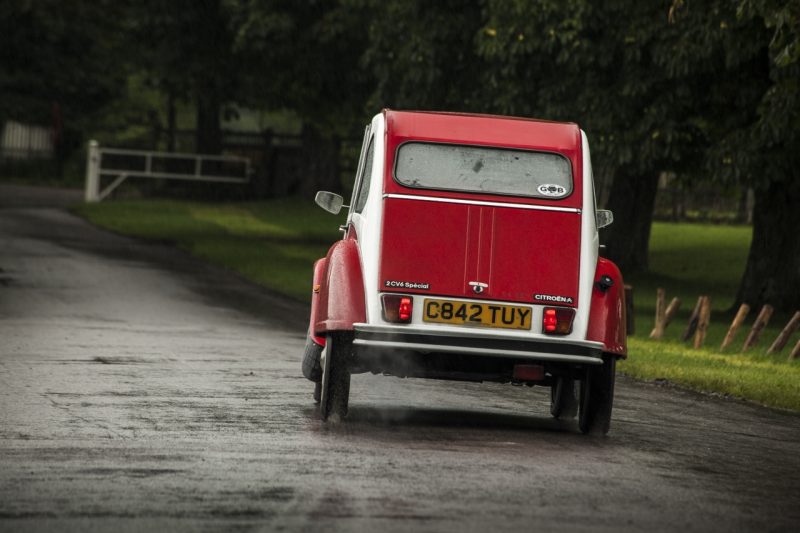
The fact that the 2CV’s charm came out of nowhere (remember, this was just meant to be a vehicle for farmers) goes to show that some machines, the special few, truly do have soul and character. And we’d have to say the 2CV is near the top of the list in terms of those attributes. And all because the men at Michelin decided to build a car for farmers…

